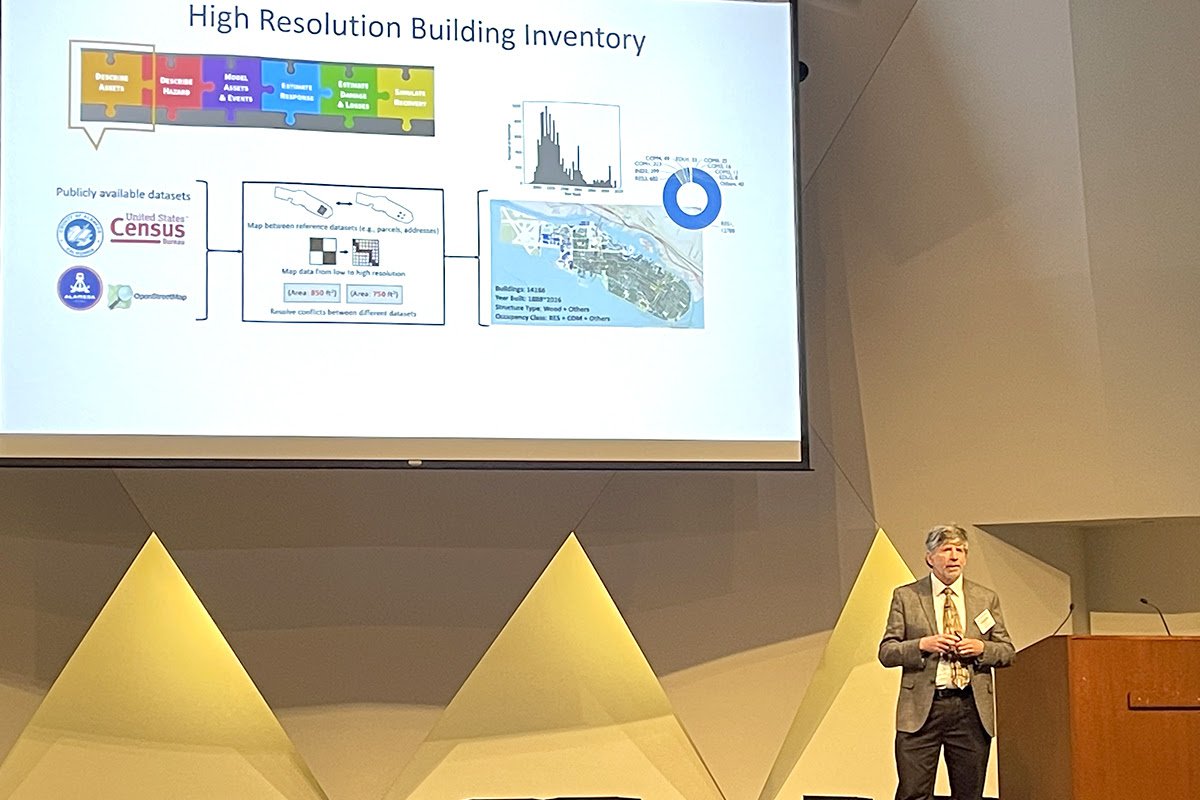
SimCenter researchers actively engaged the natural hazards research community during the NHERI Natural Hazards Research Summit 2022, which was held on October 6-8, 2022 in Washington DC.
The SimCenter and DesignSafe co-hosted two companion discussion sessions focused on computational simulation and data analytics in natural hazards researchspecifically asking what opportunities and needs in simulation and cyber-infrastructure will advance natural hazards research in 3-year and +10-year horizons.
Regional-scale simulations were the the focus of Part 1, which helped frame the Part 2 discussion on local-scale simulations. Session Hosts: Greg Deierlein, Stanford University, and Scott Brandenberg, UCLA. Session Panelists: Krishna Kumar, University of Texas, Austin, and Adam Zsarnóczay, Stanford University. The SimCenter collected input from session participants and will release outcomes in the near future.
Presentations made by SimCenter team members included the following:
The Natural Hazards Research Summit 2022 explored the research needs and priorities for the natural hazards engineering profession and NHERI communities. Panels of distinguished experts from FEMA, NIST, and NSF discussed national needs and priorities, and topic-based program tracks enabled attendees to provide input and ideas about the future direction of natural hazards engineering research.